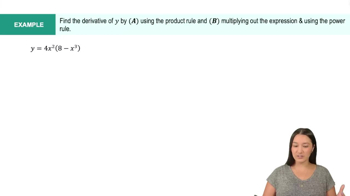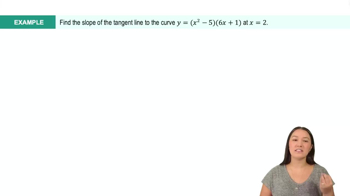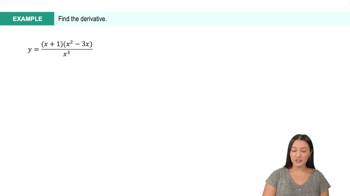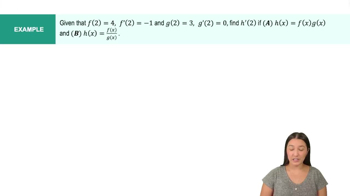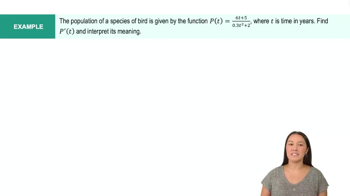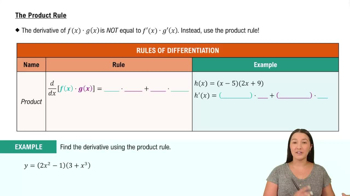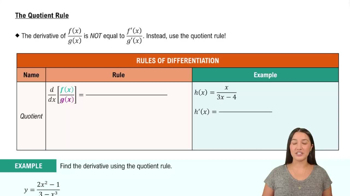Table of contents
- 0. Functions7h 52m
- Introduction to Functions16m
- Piecewise Functions10m
- Properties of Functions9m
- Common Functions1h 8m
- Transformations5m
- Combining Functions27m
- Exponent rules32m
- Exponential Functions28m
- Logarithmic Functions24m
- Properties of Logarithms34m
- Exponential & Logarithmic Equations35m
- Introduction to Trigonometric Functions38m
- Graphs of Trigonometric Functions44m
- Trigonometric Identities47m
- Inverse Trigonometric Functions48m
- 1. Limits and Continuity2h 2m
- 2. Intro to Derivatives1h 33m
- 3. Techniques of Differentiation3h 18m
- 4. Applications of Derivatives2h 38m
- 5. Graphical Applications of Derivatives6h 2m
- 6. Derivatives of Inverse, Exponential, & Logarithmic Functions2h 37m
- 7. Antiderivatives & Indefinite Integrals1h 26m
- 8. Definite Integrals3h 25m
3. Techniques of Differentiation
Product and Quotient Rules
Problem 3.R.96b
Textbook Question
{Use of Tech} Beak length The length of the culmen (the upper ridge of a bird’s bill) of a t-week-old Indian spotted owlet is modeled by the function L(t)=11.94 / 1 + 4e^−1.65t, where L is measured in millimeters.
b. Use a graph of L′(t) to describe how the culmen grows over the first 5 weeks of life.
 Verified step by step guidance
Verified step by step guidance1
First, differentiate the function L(t) = 11.94 / (1 + 4e^(-1.65t)) to find L'(t), which represents the rate of change of the culmen length with respect to time t.
Use the quotient rule for differentiation, which states that if you have a function in the form of f(t) = g(t) / h(t), then f'(t) = (g'(t)h(t) - g(t)h'(t)) / (h(t))^2.
Identify g(t) = 11.94 and h(t) = 1 + 4e^(-1.65t), then compute g'(t) = 0 and h'(t) = -4 * (-1.65)e^(-1.65t) to apply the quotient rule.
Substitute g(t), g'(t), h(t), and h'(t) into the quotient rule formula to find L'(t).
Finally, analyze the graph of L'(t) over the interval from t = 0 to t = 5 weeks to describe how the culmen length changes, focusing on the sign and behavior of L'(t) to determine periods of growth and stabilization.
Recommended similar problem, with video answer:
 Verified Solution
Verified SolutionThis video solution was recommended by our tutors as helpful for the problem above
Video duration:
5mPlay a video:
Was this helpful?
Related Videos
Related Practice



